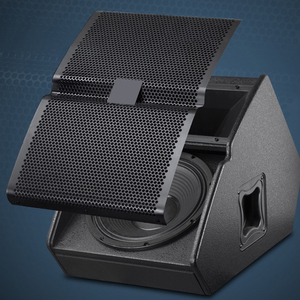Introduction to Audio Interface Monitors
Audio interface monitors are essential equipment for anyone serious about sound production, whether you are involved in music, broadcasting, or sound design. These monitors provide accurate sound representation, allowing users to hear their recordings with clarity and precision. With the right audio interface monitors, you will be able to make informed mixing and mastering decisions, ensuring your final product is professional-grade.
Types of Audio Interface Monitors
Audio interface monitors come in several types, tailored to meet diverse audio requirements.
- Active Monitors: These have built-in amplification, offering a more accurate response, ideal for home studios.
- Passive Monitors: These require an external amplifier; they are often favored for higher-grade setups.
- Nearfield Monitors: Designed to be placed close to the listener, they minimize room acoustics, making them great for small spaces.
- Subwoofer Monitors: These are used alongside regular monitors to enhance low frequencies, perfect for genres that rely on bass.
Function and Features of Audio Interface Monitors
The function of audio interface monitors extends beyond mere sound output; they enhance every aspect of audio production.
- High-Quality Sound Reproduction: They provide a flat frequency response, ensuring the audio you hear is true to the original recording.
- Customizable Settings: Many models allow users to adjust settings such as EQ and volume to suit their room acoustics.
- Connectivity Options: They often feature multiple connection types (XLR, TRS) to easily integrate with various audio interfaces.
- Durable Construction: Built to withstand daily use, quality monitors are designed with robust materials that ensure longevity.
Applications of Audio Interface Monitors
Audio interface monitors find applications across a wide spectrum of fields, making them a versatile asset for professionals and enthusiasts alike.
- Recording Studios: Essential for facilitating high-quality recordings and mixing sessions.
- Broadcasting Stations: Used to monitor sound clarity and accuracy during live broadcasts.
- Live Sound Reinforcement: Often employed in live music settings to ensure sound is balanced and clear.
- Home Studios: Accessible to hobbyists looking to produce quality music without a high-end studio setup.
Advantages of Using Audio Interface Monitors
Investing in quality audio interface monitors offers several advantages that enhance your audio production workflow.
- Improved Audio Accuracy: They allow for an authentic representation of audio, preventing misinterpretations during mixing.
- Professional Quality Output: Enables high-standard production quality, essential for competitive markets.
- Enhanced Creative Workflow: With accurate monitoring, you'll be able to experiment with confidence, knowing how your decisions affect the final output.
- Cost-Effective Solutions: Many models are available at various price points, making professional-quality sound accessible to a wider range of users.


































